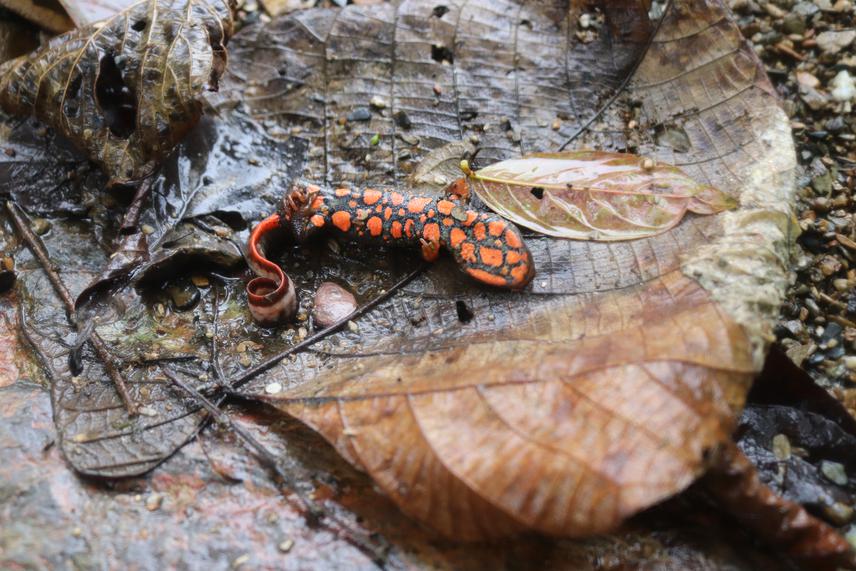Trần Văn Dũng
Other projects
19 Nov 2018
Population Status, Threats and Conservation of Northern Yellow-Cheeked Crested Gibbon (Nomascus annamensis) in Song Thanh Nature Reserve, Vietnam
15 Feb 2022
Population Size, Fine-Scale Habitat Suitability Map and Conservation on the Endangered Guangxi Warty Newt (Paramesotriton guangxiensis) in Northern Vietnam
The project will expand greatly our knowledge on the diversity, distribution, ecological niche space of the genus Paramesotriton in Vietnam. The results of the project will be the foundation for managers, policymakers, and conservationists to propose conservation plans for newt species in the short term as well as the long term. To do that, we will focus on the following objectives:
+ Collecting information on the presence data of the genus Paramesotriton in Vietnam.
+ Assessing the genetic diversity of the genus Paramesotriton in Vietnam.
+ Developing the habitat suitability models and assessing the impact of climate change on the distribution of these species.
+ Determining major threats on genus Paramesotriton in Vietnam as well as providing recommendations to conserve these species.

The genus Paramesotriton is known as Asian warty newts, and endemic to China and northern Vietnam (Wu et al., 2009; Sparreboom, 2014). In Vietnam, there are two species distributed in the northern part of the country, including P. guangxiensis and P. deloustali (Nguyen et al., 2009; Pham et al., 2017).
Guangxi warty newt (P. guangxiensis) is listed as Endangered (EN) in the IUCN Red List because of its restricted distribution as well as continuing declined population and their habitat (IUCN 2020). In Vietnam, the distribution of the species was assumed in Cao Bang Province (Nguyen et al., 2009; Pham et al., 2017). On the other hand, Vietnam warty newt (P. deloustali) was first detected from the Tam Dao National Park. After that, it has been recorded in other regions in northern Vietnam, including Bac Kan, Ha Giang, Yen Bai, Tuyen Quang, Thai Nguyen, Lao Cai, and Quang Ninh provinces (Nguyen et al., 2009; Sparreboom, 2014). The species is also facing main threats such as habitat loss due to expanding agriculture, logging, slash and burn forest land, pollution, and wildlife trade, therefore, leading to populations declines (Sparreboom 2014, IUCN 2017).
Up to now, there had been no detailed study on the warty newt in Vietnam, and many areas are still poorly surveys or have never been surveyed for newts diversity, especially for P. guangxinensis. Therefore, the knowledge on population status, suitable habitat, distribution is still unclear. The project will combine Ecological niche modelling and Phylogeography approach to assess the diversity and distribution of these species in the genus. The results of the project will expand the knowledge on the genus and contribute significantly to conserving in Vietnam.